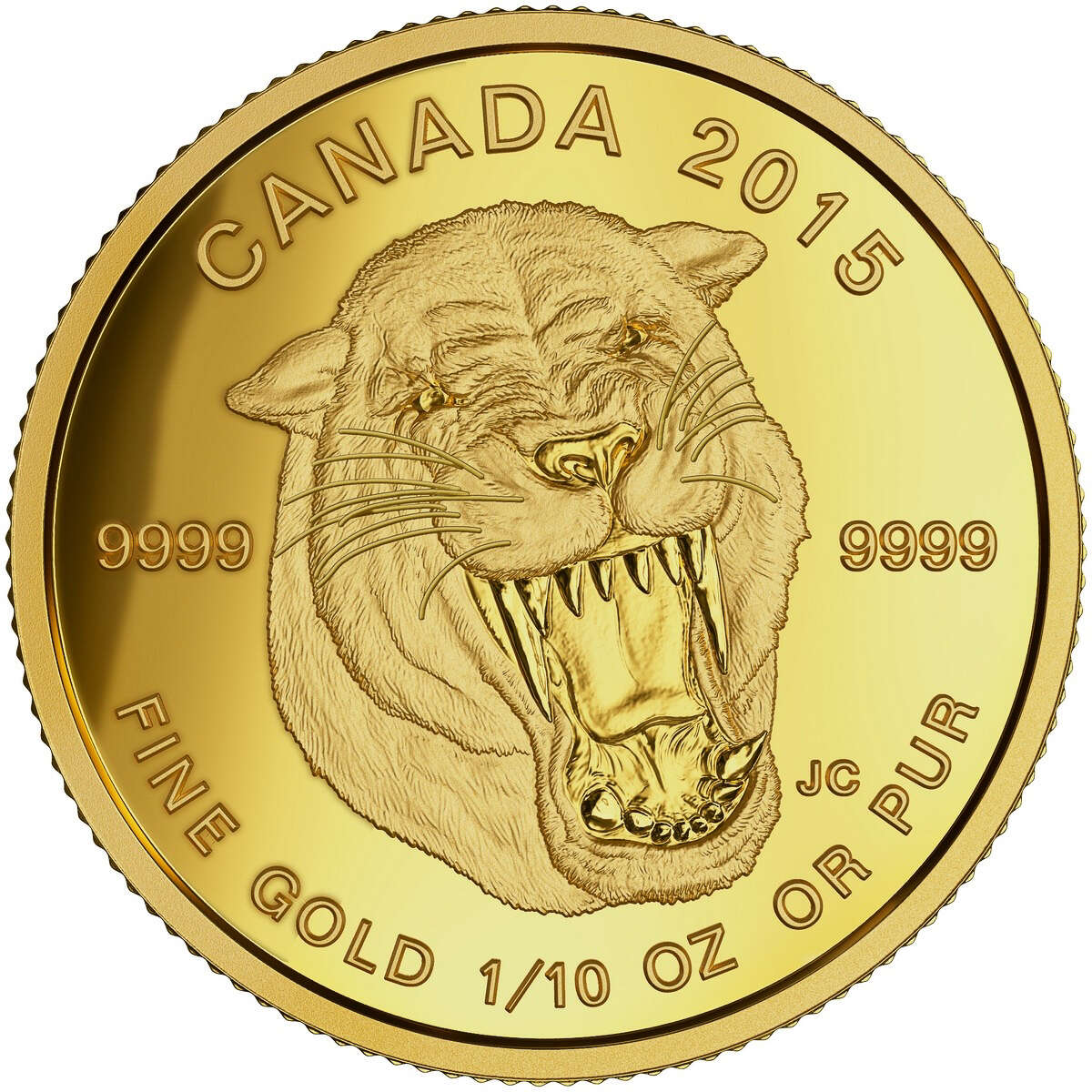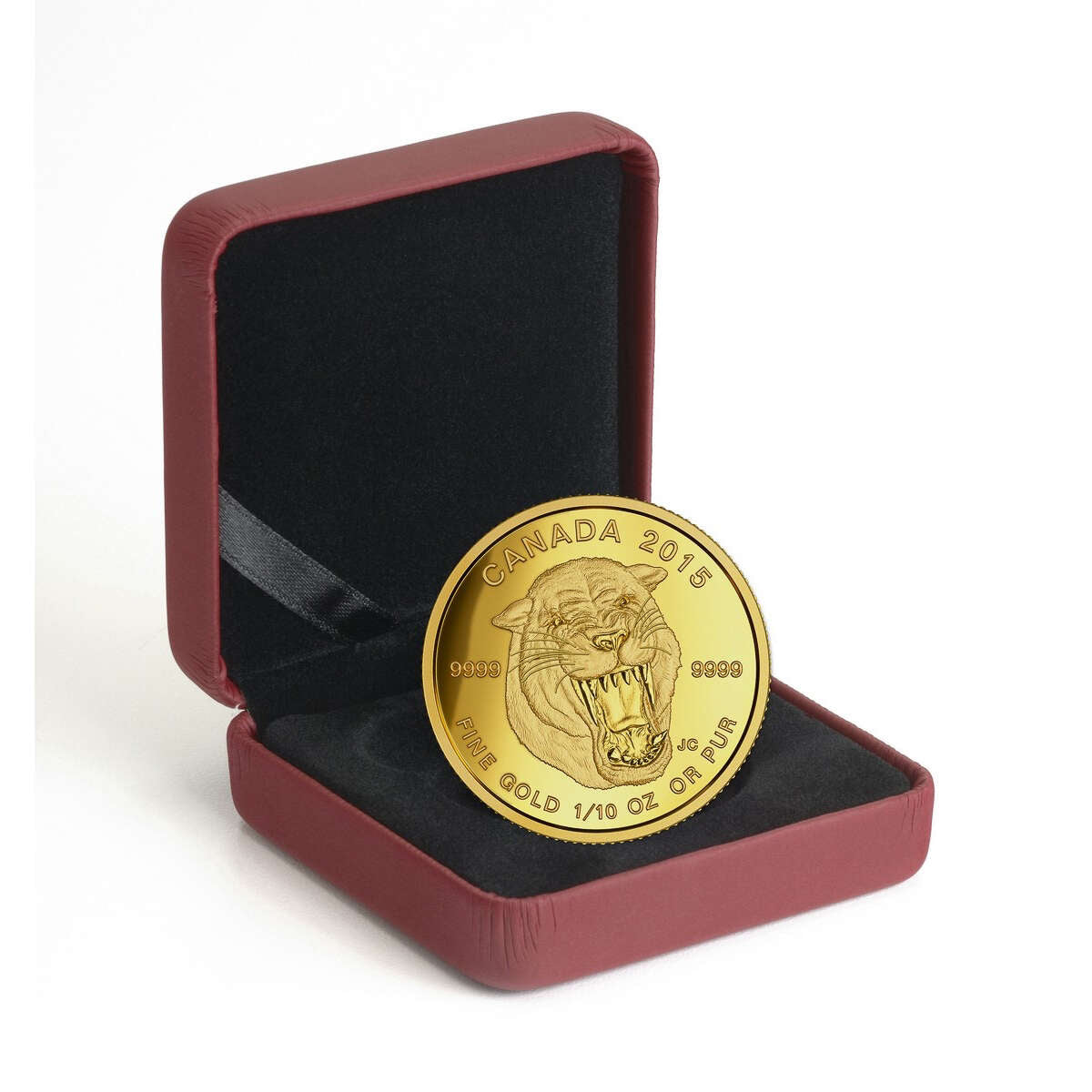Description
Step back in time to the era of the last ice age with this 2015 $5 fine gold Scimitar Sabre-Tooth Cat coin issued by the Royal Canadian Mint.
The scimitar is arguably one of the most awe-inspiring animals of the pre-historic era. Famous for its knife-like fangs, the scimitar cat's teeth were shorter than those of the better known sabre-tooth cat, Smilodon fatalis, but were equally lethal: its sabres were coarsely serrated, just like a steak knife, making them perfectly suited for slicing through the soft flesh of its prey. To ensure a high degree of scientific accuracy, the design was verified by palaeontologists of the Royal Tyrrell Museum in Alberta. Mintage is limited to 3,000 coins. HST/GST exempt.
The Design:
Canadian artist Julius Csotonyi has crafted a heart-stopping portrait of a roaring scimitar cat, with its mouth open wide as it bares its lethal teeth and scimitars. The details are exquisite: luxurious fur, piercing eyes, razor-sharp teeth and a roughly textured tongue are all beautifully rendered with finely detailed engraving.
The Scimitar Sabre-Tooth:
This fierce feline was a master at pursuing prey, which consisted of ungulates including horses and camels. The scimitar cat would charge from behind a bush or tall grasses with blinding swiftness, bowl over its intended prey and slash the throat with its lethal canines. Then, once the uproar subsided, the cat dragged its latest meal to its den.
It was roughly the size of a lion, but with a lighter body that gave it more running flexibility than its Ice Age cousins, other sabre-tooth cats and the American lion. It had a short tail like a lynx, and long, powerful forelimbs but slightly shorter hind legs that gave it a hyena-like stance.
This fascinating cat ranged from Beringia, a prehistoric grassland region from Siberia to Alaska too dry for glaciers, all the way to southern North America by way of the Yukon, the Northwest Territories, and Alberta. Having gone extinct sometime between 13,000 and 11,000 years ago, the scimitar cat's demise was likely linked to that of the large Ice Age herbivores.
**This product features dynamic pricing, which adjusts in real-time based on spot metal market prices. The price may fluctuate to reflect current market conditions, ensuring accurate and competitive pricing at the time of purchase.**






